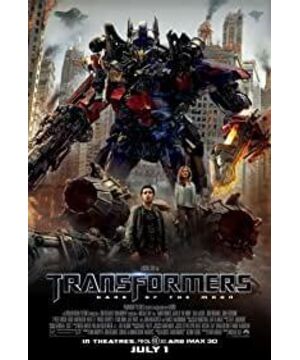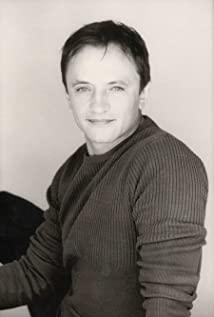(this article is super long, read it carefully)
I almost fell asleep at the movie theater again.
This drowsiness changes from one, to two, to three, without exception. And I actually kept looking at it stupidly. Therefore, I can only take this kind of behavior as a tribute to the time of childhood that is gone forever, otherwise I can't explain the spirit of knowing that I was wrong and that I have no turning back. And this spirit is precisely the consistent quality of this trilogy. That's why I can't help but complain.
——————————————Theoretical construction dividing line————————————————
As a sci-fi film, it generally has a clear and stable world view, while In it, the rules of the world should also be unified and ordered, and its basic logic should be unfolded within a closed framework. Therefore, when a story takes place on Earth, it must first unquestionably conform to the basic rules of the real world, and then, due to the technological (or magical) detachment of some individuality, a series of violent conflicts with the real scene occur. The story increases the spectacle and drama of the story. Almost all superhero movies are developed in this narrative mode: because the protagonist has the ability to go beyond conventional technology or conventional science, it has a huge conflict with various real-life scenarios, triggering a visual spectacle that will leave us amazed , such as Spider-Man who shuttles between buildings, Iron Man who uses individual armor to fight against the army, Batman who uses high-tech vehicles to climb vertically and so on.
We can see that the visual spectacle caused by the breaking of individual rules and the conflict of the overall rules is one of the reasons for the popularity of superhero movies. There are also plenty of examples based on this principle in other types of sci-fi movies. For example, Neo in The Matrix made a bullet dodging action that violated the laws of physics; even some adventure and action movies often conflicted with the real world by showing personal breakthroughs in physical rules or personal physical fitness rules. Various visual wonders are created, such as the Qinggong in Crouching Tiger, Hidden Dragon and so on.
To sum it up, in theory, there are three main points of this type of cinematic visual spectacle:
One, there must be individual breakthroughs in the basic rules. That is to say, there must be a protagonist with supernormal abilities (this is also the basic element of the classic heroic epic architecture derived from Homer), he can be a gifted person, such as Superman; or an acquired misstep, such as Spiderman; Or have super equipment, such as Batman Iron Man; or excellent skills, such as Bonn; or have a great little brother, such as the Green Hornet. But in any case, he must have the ability to break the basic social rules, so that the story can continue.
Two, there must be a worldview with ground rules. And this worldview is best if it can be widely recognized. Most sci-fi stories take place in the real world on Earth, which saves a lot of the hassle of basic worldview design, because the audience is familiar with it. Even when constructing worldviews outside of the real world, successful films often exploit unrealistic scenes that are familiar to the audience. For example, The Matrix and Inception, the virtual worlds or dream worlds in their stories can also be recognized by computer enthusiasts and all dream audiences, and both worlds accurately imitate the real world in terms of image. It can also cause a suggestion to the audience that "this is still the real world", and then through the breakthrough of its subjective world logic, it will lead to a larger dramatic conflict and a more exciting visual spectacle.
Third, individual breakthroughs in basic rules must be controllable within logic. In other words, individual breakthroughs must not completely destroy the basic rules and cause huge changes in the basic rules. (Changing the basic worldview in a movie will often bring about the denial of the audience’s cognition, thereby weakening the spectacle effect of individual breakthroughs. Because for a movie, it is basically impossible to solve the basic worldview in about 2 hours. change the question). They should reach a compromise after local conflicts, so that the real world rules remain within the scope of our identification, rather than changing the entire basic world view rules due to the strength of the individual. At this point, the X-Men are an example of the outcome, although the superpowers of mutants can bring the power to destroy or change the basic rules of logic in the entire world, the film story draws on various elements such as human nature, friendship, morality, etc. for the individual's The breakthrough is controlled by logic, so that the strong individual ability cannot completely break through the setting of the basic world view, and various conflicts can only occur within its framework. The basic rules have also been slightly changed after various conflicts and conflicts, but they still remain the same. This not only accumulates elements for the sequel, but also creates a potential classic tragic hint through the helplessness after the conflict between individual abilities and basic rules (superheroes can destroy the world and save the world, but cannot change the world). The epic feel of the movie.
A basic worldview with rules, individual breaking of rules, and controllable logic for breaking through. These three points are the basic elements that enable the audience to obtain the satisfaction and identity of the sci-fi movie after 2 hours. Whether it's Batman, Superman, Spider-Man, Iron Man, X-Men, and various heroes, they are undoubtedly successful practitioners of the three major points and box office hits.
—————————————————————————————————————————————
There is no doubt that the Transformers movie version feels that it is shooting according to these points There will be no problem going down. First of all, the Decepticons of the Autobots are extremely powerful, and they are much more powerful than Iron Man; secondly, the story takes place on the earth, and there is no need for a fictional world view, and the basic logic is basically without any obstacles; again, there are long animated series for Basically, there shouldn't be any big deviations in logic. But what happened next made everyone stunned: ——Because
the hairy Transformers are so awesome, they still need earthlings as labor? When do people need bugs for labor?
——Because Mao Decepticon is so arrogant, he turned against the water after being said a few words by a brainless girl?
——For Mao Optimus Prime to destroy his hometown with his own hands to save the alien race?
——Why can't the missiles kill the Decepticons in the first episode of Mao, and then the sniper rifles can blind them?
——Because Mao's Decepticon Technology is so awesome, you still need to use your eyes to find Sam in the building?
——Putting Starscream's eyes in for Mao Sam, the red does not deform and flies away and falls to death, where is it still so painful that Optimus Prime's arm is chopped off and it doesn't hurt?
——...
Well, there are too many questions to complain about, but why are there no such questions in the anime series version? Certainly not because the audience is too picky. But because the idiot crew quietly changed the core element of the whole story-the world view setting. As a result, the logic of the worldview of the whole story and all kinds of contradictions and conflicts are all out of control. We can interpret them one by one from the three elements mentioned above.
First, the basic world view with rules The world
view settings of the animated version and the movie version seem to be exactly the same, but they are not. Although the world view of the animated version is also the real world, it is actually a pseudo-real world with a closed concept. In this world, there are only about less than 10 human beings living in it. In other words, although they are all the earth, the earth in the animated version is an earth with only natural resources and natural laws; and the earth in the movie version is the earth in the eyes of Americans, full of terrorists, political struggles, bureaucrats Doctrine, and the earth occupied by human society headed by the United States. These two worldviews are simply worlds apart. The rules of its world view are also completely different:
in the animated version of the world view rules, there are only basic geophysical rules, and more importantly, the relatively single Transformers social rules (faction war society) constructed by robot groups.
In the world view rules in the movie version, although there are general physical rules and robot social rules, it emphasizes the human social rules. It strongly incorporates robots into human beings, making the worldview of the whole story change dramatically, so the narrative focus of the story has also quietly shifted. And the narrative contradiction brought about by this transfer is particularly prominent on the second point.
2. Breakthrough of the rules of individuality
Many people think that the Transformers in the animated version and the movie version are different in their individual abilities. They can fly, fight, and deform. But in fact, their abilities have quietly become worlds apart due to changes in their basic worldview.
The same ability to lift a ton, for example, is a very different ability on Earth and the moon. Due to the changes in the world view settings, the personal abilities of the King Kongs who can also fly and transform have also quietly changed.
When the basic rules are the pure robot war society that takes place on the natural earth, the visual spectacle presented by the cartoon lies in the various fighting styles that the robots show in battle beyond human expectations. The shape-shifting combat machine created a visual sensation. And the trailer for the movie version was once used as a gimmick. But when the basic rules are quietly changed to the real society of human existence, the ability of robots to deform obviously has nothing to do with the basic rules. In order to solve this problem, the director set the narrative element of robots lurking in human society in various machine images, thus effectively solving the problem of the fit between the basic abilities of Transformers and the background of the world view, but the consequences are: in this way , Transformers don't seem so arrogant, they have changed from an upright combat unit to a low-key knight who is committed to the human society. The conflict between the super powers of Transformers and the basic world view has become very weak invisibly. Audiences who wanted to see all kinds of deformations emerging in the steel and fire battle ended up being a cute toy that turned into various household appliances and played peek-a-boo with humans.
The same is deformation, but one is deforming to fight, and the other is deforming to sell cute to humans. Of course, fighting is more arrogant! ! !
Next, after a change in the basic worldview softened the Transformers' individual abilities, another major deviation in the story occurred in the second bullet point - the human protagonist?
Maybe the screenwriter has to set more human characters to integrate into the world view because of the change of the world view; maybe the screenwriter has received money from the Pentagon and must set up more human characters (mostly the military heroes), thus changing the world view setting . Let’s not worry about these problems, and return to the theoretical framework, we will find: The human protagonist does not have the superpower to break through the basic rules of the world view? Maybe some people think this is not a problem, so let's start with the role of Sam.
Overall, the setting of Sam's character is extremely unsuccessful. As a sci-fi movie with various visual spectacles as its core selling point, if the male protagonist (I have no face to say it is Optimus Prime) does not have any breaking rules, causing visual The capacity for spectacle and conflict can cause serious narrative difficulties, especially in pictures. When watching the movie, when the story reaches its climax, when we expect some spectacle scenes (commonly known as "big scenes") to appear, we will find that the male protagonist who has no superpower at all shows all kinds of superpowers that break the basic rules like a god With the organization of various visual spectacles, there is no doubt that a sense of absurdity and a sense of superiority to the IQ of the main creators are born spontaneously.
Fortunately, this sense of absurdity can quickly transition from Sam to a lot of small American soldiers. When the US Army Xiaoqiang, who also does not have any breakthrough personal ability (say, you are equipped with some sci-fi weapons), uses various conventional weapons but is extremely unconventional when confronting various super-capable Transformers, You'll start to wonder, and find that this writer is completely ignoring any film narrative rules.
First you have to give your characters the ability to challenge the rules of the basic worldview, and secondly you have to create unconventional conflicting visual spectacles. The truth is as simple as this: You can't say Kim Il-sung is not a superman after he shoots down an American fighter jet with a pistol, and at the same time he takes a fucking 38-year-old cover.
So, if you turn Transformers into Transformers, I will endure it first. But since you want to create an unreal spectacle effect, please come out with the unreal protagonist first, please don't stage the revolutionary miracle of the Eighth Route Army defeating the Heavenly Soldiers and Heavenly Generals.
But this kind of miracle is obviously helpless, and we can sort out this potential context in the interpretation of the third point. Third, the resetting
of the logically controllable world view of breakthroughs, and the wrong placement of the ability to break through individual rules, the inevitable result is that the logic of the conflict between the individual and the rules has reached an outrageous level.
The result here is extremely manifested in "Wei Mao - Among the Series of Questions". The explanation for why these problems arise is actually quite simple:
a complex logical issue that was avoided in the original book—the power balance of humans and Transformers—was erroneously magnified in three film episodes. This brings a series of logical problems.
Although the ability of Transformers appears to be weakened under the framework of the new world view, we can basically judge from the display of the movie screen that in the face of the so-called modern human social rules constructed by the division of basic human armed forces (that is, the Basic world view rules), the personal power of Transformers is still obviously too strong. When an individual's ability to break the rules is far greater than the rules of the world view itself, this kind of conflict becomes extremely uncontrollable. In other words, Transformers is so powerful that his every move can easily and profoundly destroy or alter (rather than affect) the basic worldview constructed in the movie, so what reason do we have to give him not to?
Generally speaking, our superheroes are not that powerful. The armed forces and explosive units they have are city-level, and they do not have the strength to fight against the highest-level weapons of human beings. Human society itself can form theoretical checks and balances. , at the same time, stories can provide enough checks and balances and make enough justifications (humanity, morality, friendship, love, etc.) for their failure to change the trajectory of our world. And Transformers is vastly different. Since human beings do not have the strength to compete with it in terms of strength, what reason should be used to restrict it?
In order to control this conflicting logic of the disparity in power, the screenwriter proposed three major theories: 1, the theory of freedom, 2, the theory of friendship, and 3, the theory of freedom and invincibility.
libertarianism.
Liberty is the core theory to control Autobot leader Optimus Prime. This theory holds that Optimus Prime's values are completely consistent with those of the US imperialists, fighting to defend the freedom of the entire universe, so he naturally becomes an ally of the US imperialists, forming various cooperation mechanisms, and unconditionally agreeing with the social behavior of the US imperialists. Therefore, although Optimus Prime is awesome, he will not change the basic human social order centered on the US imperialists, so it will not hinder the maintenance of the basic world view. On completion.
Friendship Theory.
The Friendship Theory is a core theory created to prevent Optimus Prime from being unable to govern his subordinates and resulting in the mutiny of the Autobots against the human society. This theory holds that all Autobots from Optimus Prime have formed a revolutionary friendship of blood thicker than water with individual U.S. imperial masses, so they naturally stand on the side of U.S. imperialism and support the U.S. imperialist various war actions to safeguard human freedom and basic social order. Although they may express dissatisfaction with some U.S. imperial people and officials, based on the basic U.S. imperial value principle of "love outweighs hate", they have reached understanding with those U.S. imperial cadres who also have prejudice against them, and signed a memorandum in due course. On completion.
Liberty invincibility.
The invincibility of liberty is an extension of libertarianism, and it is the core theory to prevent the Decepticons from destroying human society in an instant. Because the Decepticons are not free, the car people who pursue freedom will do their best to prevent any unfree actions of them, and defend the stability of the basic social rules of people and the basic world view of movies. And the Autobots + the U.S. military will win. On completion.
Whether it is freedom theory or friendship theory, this is the logic control method of common superhero sci-fi movies. Although it is no different from farting, it makes people complain infinitely after watching it. But, after all, you can't interfere with other people's values after all, so we reluctantly endured it. We naively believed that the mechanical aliens were very well coupled with the values of the American emperor, thus forming a united front, and Does not affect the collapse of the basic worldview.
But the invincibility of liberty drove the writers and I to despair. In order to defend the basic stability of human society, we cannot rely solely on Autobots to fight the war to defend freedom. We must personally devote ourselves to the war, otherwise it will be inconsistent with the spirit of the basic rules of human society dominated by the US imperialists.
But the problem is, no one believes that humans can beat Transformers! No matter how you explain, how you describe it, or how unrealistically dope the US military Xiaoqiang, everyone will still laugh at you dumbfounded. The U.S. emperor beat up the Decepticons? yy, it's stupid, it's funny. Of course, you can say: whether you believe it or not, I believe it anyway.
But if that's the case, the American emperor you represent, and the spirit of freedom they preach, suddenly become so celestial and ridiculous?
View more about Transformers: Dark of the Moon reviews











